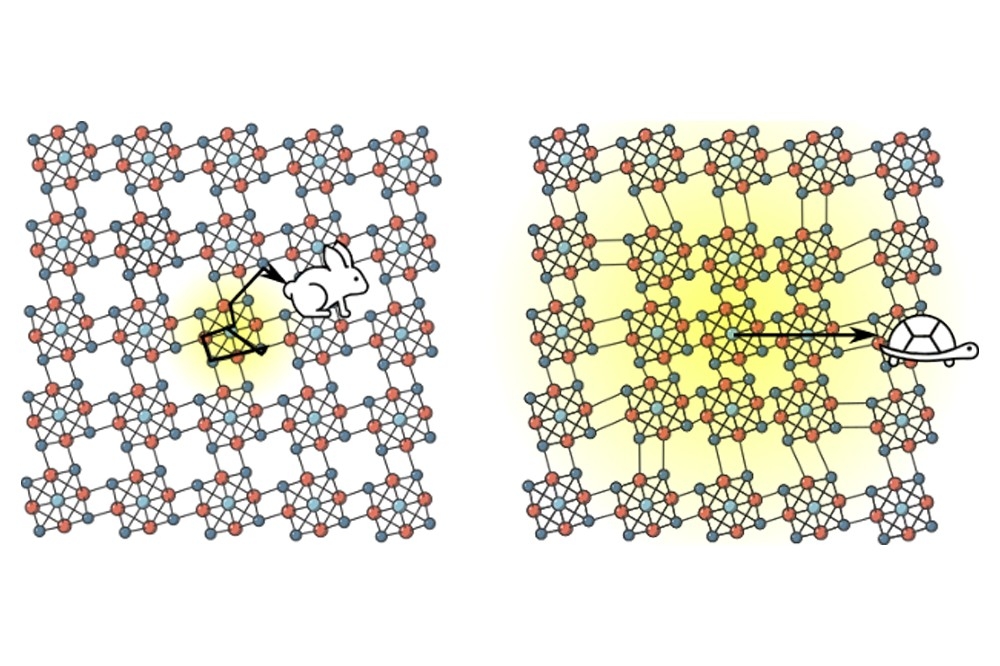Is this the world's fastest semiconductor?

Columbia chemists discover room temperature scatter-free flow in Re6Se8Cl2
A team of chemists at Columbia University, led by Jack Tulyag, a PhD student working with chemistry professor Milan Delor, have described what they believe is the fastest and most efficient semiconductor: a superatomic material called Re6Se8Cl2.
"In terms of energy transport, Re6Se8Cl2is the best semiconductor that we know of, at least so far," says Delor.
As atomic structures vibrate, they create quantum particles called phonons. These in turn scatter the electrons or electron-hole pairs (excitons) that carry energy and information in a semiconductor device. Scattering not only slows down information transfer but results in energy loss in the form heat.
Excitons in Re6Se8Cl2 aren't scattered by phonons, instead they bind with them to create new quasiparticles called acoustic exciton-polarons. Although such polarons are found in many materials, those in Re6Se8Cl2 are capable of ballistic, or scatter-free, flow.
Tortoise and hare
Although electrons in silicon move quickly, like the proverbial hare, they bounce around and don’t make it very far, very fast (picture above left). Excitons in Re6Se8Cl2 are much slower, but this means they can meet and pair up with equally slow-moving acoustic phonons (picture above right). The resulting quasiparticles are “heavy” and, like the tortoise, advance slowly but steadily. Unimpeded by other phonons, acoustic exciton-polarons in Re6Se8Cl2 ultimately move faster than electrons in silicon, according to the researchers.
In experiments run by the team, acoustic exciton-polarons in Re6Se8Cl2moved fast—twice as fast as electrons in silicon—and crossed several microns of the sample in less than a nanosecond.
Given that polarons can last for about 11 nanoseconds, the team thinks the exciton-polarons could cover more than 25 micrometers at a time. And because these quasiparticles are controlled by light rather than an electrical current and gating, processing speeds in theoretical devices have the potential to reach femtoseconds—six orders of magnitude faster than the nanoseconds achievable in current Gigahertz electronics. All at room temperature.
Re6Se8Cl2 is a superatomic semiconductor created in the lab of collaborator Xavier Roy. Superatoms are clusters of atoms bound together that behave like one big atom, but with different properties than the elements used to build them.
Re6Se8Cl2 can be peeled into atom-thin sheets, a feature that allows it to be potentially combined with other similar materials in the search for additional unique properties. Re6Se8Cl2, however, is unlikely to make its way into a commercial product because Rhenium, is one of the rarest elements on earth and extremely expensive.
“This is the only material that anyone has seen sustained room-temperature ballistic exciton transport in. But we can now start to predict what other materials might be capable of this behavior that we just haven’t considered before,” said Delor. “There is a whole family of superatomic and other 2D semiconductor materials out there with properties favourable for acoustic polaron formation.”
Reference
'Room temperature wavelike exciton transport in a van der Waals superatomic semiconductor' by Jakhangirkhodja Tulyagankhodjaev et al: Science (2023)


































